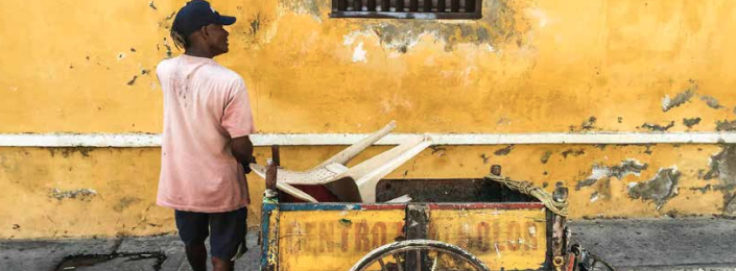
Search
Two Key Aspects to Tackle Poverty in Its Many Dimensions

We now know that national multidimensional poverty indices (MPIs) not only measure poverty but are also effective tools for poverty reduction. There are two requirements for this lesson learned to be put into action. The first is that MPIs must generate good information and, for this to happen, their technical implementation must be rigorous, nonpartisan, frequently updated and based on indicators that can be impacted through direct action. The second is that they must be approved by and implemented with the full support of the president or top leadership of the country.
The first requirement is easier to fulfil than the second. Statisticians and researchers in governments mostly want to implement robust, verifiable data with their work. The technology of the MPI – the Alkire-Foster method – is quite straightforward and simple to apply. It can be taught fairly quickly and, once one goes through the process of building a viable national MPI, the technical capacity is there and can be shared with others. It may take time to agree on dimensions and indicators to put into the measure – itself a combination of technical and political factors – but once those are determined, the actual technical work required to develop the national MPI is relatively straightforward. Rigour is therefore possible so that good information is generated for effective policies.
The more the dimensions and indicators reflect nationally recognized, and nonpartisan, key aspects of poverty, the more the measure will not only impact poverty but also survive changes in governments.
Experience shows that the second requirement – the approval, support and ownership of the president and or top leadership of the government – is crucial. It is also more difficult to attain. But if it is, the MPI can revolutionize national programs and therefore impact poverty dramatically. I will use two countries – Colombia and Costa Rica – to show how.
The more the dimensions and indicators reflect nationally recognized, and nonpartisan, key aspects of poverty, the more the measure will not only impact poverty but also survive changes in governments.
In Colombia, former President Santos himself drove the implementation of the MPI and championed it within his cabinet. In Costa Rica, former President Solís approved the MPI and gave his Vice President Ana Helena Chacón the green light and his total support for her to put the power of the presidency behind the national MPI. And in both countries, we can isolate a few key ingredients that were crucial for the successful adoption of the MPI as a tool to reduce poverty and are, thus, highly recommended for replication in other countries.
▪ The president of Colombia and the vice president of Costa Rica understood the MPI and put all the power of the presidency behind it. They became avid promoters of the MPI at the regional and international level within the MPPN and other bodies – thus reinforcing their ownership of the MPI and emphasizing its importance to their own populations and ministers.
▪ In both countries, the MPI was put into the national plan as a priority measure of achievement.
▪ Both leaders set up a mechanism for coordination and implementation of government programmes. In both countries the implementation of the MPI was not left to one ministry or one government agency.
▫ In Colombia the president set up a Poverty Coordination Committee composed of all the social ministers linked with the MPI – and he met with this body regularly to see what progress had been made on decreasing the MPI. The president used these meetings to highlight new programs to attack areas that were lagging.
▫ In Costa Rica the MPI was implemented and managed through the Social Cabinet that was chaired by the vice president. This body brought together all the ministries linked with the MPI. It was the natural place in which to coordinate programs and monitor progress.
▪ In both countries ministers were held accountable to clear and specific targets over time.
▫ In Colombia they set up a traffic light system of control. Clear targets were established (for example, the percentage that an MPI indicator would go down over several years) and then monitored and reported at the Poverty Coordinating Committee.
▫ In Costa Rica the government introduced a Management Scorecard (developed with the private sector) to set targets and monitor progress.
▪ Both countries used the MPI to guide the national budget. The MPI was used as the lens to develop the national budget on poverty, helping to eliminate waste, focus programs on the poorest regions and target limited resources more effectively.
The Colombian and Costa Rican experiences show that ownership of the MPI at the highest levels combined with a robust reliable method of measurement that provides solid data has a direct impact on the reduction of poverty in its many dimensions. This success drives understanding as well as the wisdom to promote the expansion of the MPI where these conditions exist.
Photo: Flickr | chrisgold.
This article was published in Dimensions Magazine 6 (PDF).
















